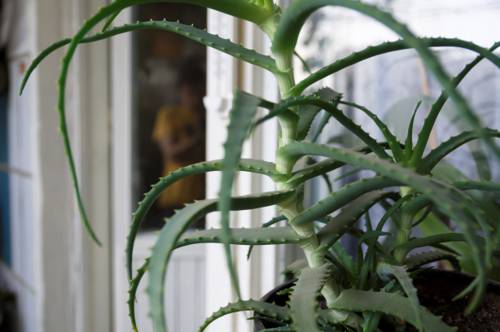
FAQ About Indoor Plant Disease Management

What are common diseases affecting indoor plants?
Common diseases that affect indoor plants include powdery mildew, root rot, leaf spot, and botrytis (gray mold). Each disease presents distinct symptoms, requiring specific treatments for effective management.

How can I identify powdery mildew on my indoor plants?
Powdery mildew is identifiable by a white or grayish powdery growth on the surfaces of leaves, stems, and buds. It typically occurs in warm, dry conditions but can affect plants in various environments.

What causes root rot in indoor plants, and how can it be prevented?
Root rot is typically caused by overwatering, poor drainage, or fungal infections. To prevent root rot, ensure proper drainage in pots, avoid excessive watering, and keep the soil aerated.

What symptoms are indicative of leaf spot disease in indoor plants?
Leaf spot disease is characterized by brown or black spots on leaves, often surrounded by a yellow halo. These spots can lead to leaf drop and weaken the plant if not treated promptly.

How does botrytis (gray mold) affect indoor plants?
Botrytis, or gray mold, affects plants by causing grayish, fuzzy mold on stems, flowers, and leaves. It's more prevalent in cool, damp conditions and can spread quickly without intervention.

What methods can be used to treat powdery mildew?
Treatment for powdery mildew includes removing infected plant parts, improving air circulation, and applying fungicidal sprays. Homemade remedies, such as a mixture of baking soda and water, can also be effective.

How can one treat root rot in indoor plants?
Treating root rot involves removing affected roots, replanting in fresh soil, and improving drainage. Reducing watering frequency and ensuring the pot has adequate drainage holes is crucial.

What are effective prevention strategies for leaf spot in indoor plants?
To prevent leaf spot, ensure proper air circulation, avoid overhead watering, and remove any affected leaves promptly. Using disease-free soil and tools can also help reduce transmission risks.

Are there natural remedies for managing botrytis on plants indoors?
Natural remedies for managing botrytis include increasing ventilation, reducing humidity, and applying homemade fungicidal solutions, like chamomile tea or garlic extract, to affected areas.

Can indoor plant diseases spread to other plants?
Yes, many indoor plant diseases can spread to other plants, especially if they are located in close proximity or share similar environmental conditions. Monitoring and isolating affected plants can prevent spread.

How does environmental control help in managing indoor plant diseases?
Controlling environmental factors such as humidity, temperature, and light exposure helps manage indoor plant diseases by creating an inhospitable environment for pathogens. Regularly maintaining these conditions can prevent diseases.

What is the role of sanitation in preventing plant diseases indoors?
Sanitation plays a vital role in preventing indoor plant diseases by reducing the presence of pathogens. This includes cleaning pots, tools, and plant debris, as well as using sterile soil when repotting.

How can I improve air circulation to prevent plant diseases indoors?
Improve air circulation by spacing plants to avoid overcrowding, using fans to disperse air, and trimming excess foliage. Proper ventilation reduces humidity and prevents disease development.

Can chemical treatments for indoor plant diseases be harmful?
Chemical treatments can be effective but may harm beneficial insects or plant health if misused. It's crucial to follow labels and consider safer, organic alternatives when possible.

Do fungal infections cause most indoor plant diseases?
Fungal infections are indeed a leading cause of indoor plant diseases, contributing to conditions like powdery mildew, root rot, and botrytis. Proper cultural practices help manage fungal diseases.

How frequently should I monitor my indoor plants for diseases?
Regular monitoring is key; inspect your plants weekly for any signs of disease or unusual changes. Early detection helps in effective treatment and preventing widespread infection.

What organic options are available for controlling indoor plant diseases?
Organic options include neem oil, insecticidal soap, and homemade mixtures like baking soda sprays. These are generally safer for indoor environments and can effectively manage a variety of diseases.

Can pests contribute to indoor plant diseases?
Yes, pests can facilitate the spread of diseases by damaging plant tissue and providing entry points for pathogens. Controlling pest populations is vital for disease management.

What are the signs that an indoor plant disease treatment is working?
Signs that a treatment is effective include reduced symptom severity, healthy new growth, and stabilization in the plant's overall appearance. Consistent care alongside treatment is essential for recovery.

How can I safely dispose of diseased plant material?
Dispose of diseased plant material in sealed bags and discard it with regular trash to prevent pathogen spread. Avoid composting infected material to minimize disease recurrence.
